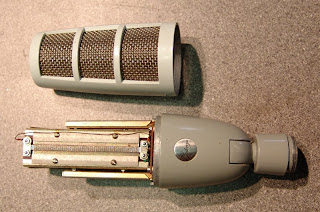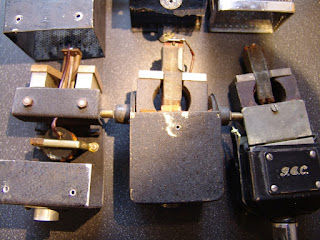Here is a UK patent by Eric Thompson of Simon Equipment Ltd, from 1959, that relates to the Cadenza ribbon microphone: Cadenza Patent
 |
| Drawing from patent for Cadenza microphone |
The novelty in this patent is that the ribbon is fixed in the middle and clamped at either end. The inventors claim that this allows the two halves of the ribbon to be tuned to slightly different frequencies to give a flatter overall frequency response. I had suspected this for some time, but had never seen it written down! It also has the advantage of supporting the ribbon and giving it some protection against stretching. And here is a photo of the design in real life, from an earlier post.






